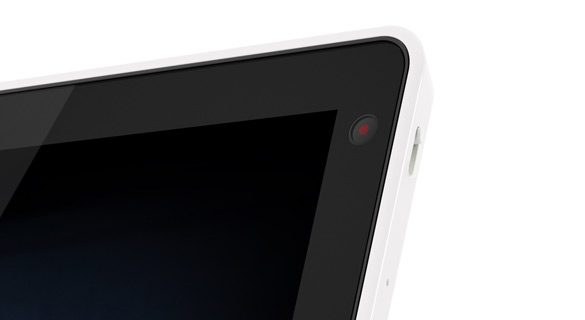5 ways Amazon can improve the Echo Spot’s hardware
Since Amazon’s Echo Spot was released in December, the smart speaker has already seen a few software updates. While Amazon can update Alexa’s brains remotely and frequently, improving the actual hardware of the device means building a second-generation product. Here’s a look at five ways Amazon could improve on the Spot’s hardware in the future.
1. Bigger screen


The device’s form factor is spot-on (pardon the pun), but bezels are so 2016. As phones and monitors wane wasted space, so can the Spot. The device’s 2.5-inch screen could expand to 3.5 inches without changing the unit’s perfect size.
Increasing the screen size will make photos look better, fit more text on a circular display (where reading is tough enough already), and provide more area for touch.
The Spot’s current screen is actually an octagon disguised as a circle by the bezel. Unique LCD screen shapes are more expensive to produce, but other screen technologies (more on this later) solve that problem.
2. Back-up battery
The Echo Spot was born to be an alarm clock, save for one rider: if your power zaps out (and stays out) overnight, you may be sleeping in.
Amazon could work toward enabling it so that in the event your Spot isn’t connected an alarm could sound on your phone, but not even that would help if you and your phone don’t sleep in the same room.
Adding a back-up battery to the Spot seems like a no-brainer. Such batteries seem the default in any respectable alarm clock, and at around $130, the Spot is a pretty high-end alarm clock. A battery doesn’t need to fully power the Spot, or even light the screen; it just needs to fulfill the promise of alarms set.
3. Micro-LED

While the Spot’s screen can be set to automatically darken at a set time each day, it still emits a fair amount of light. As more research heralds the benefits of sleeping in total darkness, the less light in our bedrooms the better. However, if you command the screen completely off, you can’t use the Spot as a clock in the dark.
Amazon could switch the display to OLED, which would allow the time and icons to display continuously while the rest of the screen remains off (like many Android phones). However, OLED screens suffer from eventual burn-in, and given that the Echo’s display is meant to perpetually emit, that could spell a problem.
The easy solution may be to periodically shift the placement of the clock, similar to the moving logo on old DVD player screensavers.
One emerging technology, Micro-LED, seems to be the optimal solution. It offers perfect blacks, is immune to burn-in, and should be less expensive than OLED.
4. Camera cover

The Spot’s size (and skillset) makes it an apt bed stand or bathroom countertop companion. The key caveat is that it places a camera in your home’s most private areas. Amazon should mitigate privacy concerns by including a physical lens cover on the device. In fact, one of Google’s upcoming, competing smart displays solves this dilemma. The unit (which is actually made by Lenovo) includes a switch that places a cover over the camera. It’s expected to go on sale for around $200 in July.
5. Bonus extras
What other surprises could Amazon pack into the Spot?
A. A built-in thermometer would help Alexa know the indoor temperature for users who don’t have an internet-connected thermostat in their home or office. However, adding a thermometer to the Echo is a bit like adding an FM tuner to an iPhone. It might be helpful, but more modern technologies exist.
B. A built-in USB port could charge phones or tablets. The Spot is already a nightstand mainstay. The only dilemma is that USB will likely age poorly. Standard USB (Type-A) is already being replaced by Type-C in mobile devices, and wireless charging will soon be the norm anyway.
What hardware features do you think Amazon should add to the next Echo? Tweet your responses to @HarrisonKeely or contact Harrison at hkeely@reviewjournal.com.














